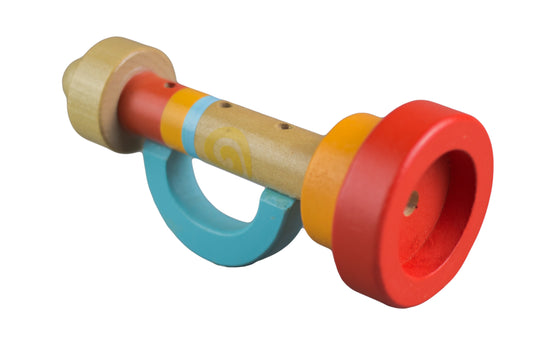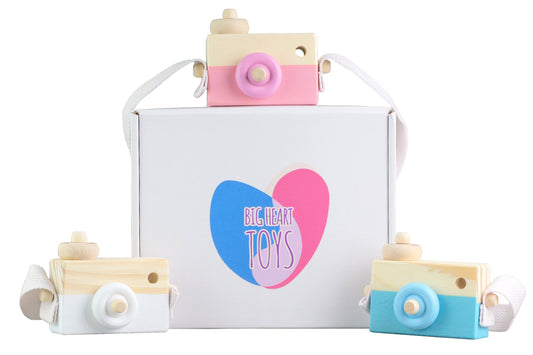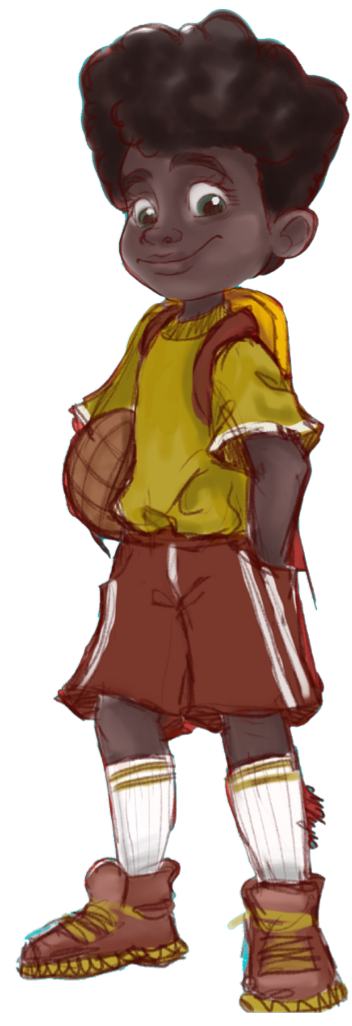Young children develop a variety of self-soothing behaviors as they grow. Many are short-lived, others stick around, and some seem impossible to help them break.
Let’s talk about what nervous habits are, how to spot them, and when they might become a concern.
What Is a Nervous Habit?
There are many different types of nervous habits. A habit is a repeated behavior or action that children are often unaware they are even doing. Typically, this involves fiddling with their hands, feet, hair, mouth, or a combination of these.
Some nervous habits stem from boredom, while others are triggered by feelings of anxiety or stress. At times, habits are developed in infancy and carried on through toddlerhood and childhood.
Most nervous habits are unintentional and go unrecognized by the child while doing it. However, some begin as an intentional reach for attention and develop into certain habits when done too frequently. Sometimes, they are a result of simply being tired, or they occur more frequently when the child is sleepy.
Nervous habits are rarely, but sometimes, carried all the way into adulthood. Usually, children will outgrow these repeated actions with age. Many habits are generally harmless, although frustrating at times for parents.
Resolving nervous habits is not always necessary, as they may fade with time. However, strategies and tips can help break these habits if they become too frequent or distracting.
How To Identify Nervous Habits
Nervous habits can be a wide variety of things and are different for every child. The first step in identifying nervous habits in children is to determine if the behavior is repetitive and lasting.
Self-soothing habits are most often visible in toddlers and preschool-aged children, and these habits typically decrease in frequency and occurrence with age. It is possible for a child to demonstrate multiple nervous habits simultaneously.
For example, a tired child might suck their thumb while twisting their hair; both of these habits are common for younger children. Many habits are co-occurring, and this doesn’t necessarily mean that a child is displaying more anxiety than a peer who has only one nervous habit.
Examples of Childhood Nervous Habits
While there are many, many kinds of nervous mannerisms, common examples include:
- Thumb/finger sucking
- Nail biting or picking
- Hair twisting or pulling
- Nose picking
- Skin picking
- Lip biting or chewing
- Chewing objects or clothes
- Teeth grinding
- Knuckle stretching or cracking
These are not uncommon occurrences, especially in children, but when they occur frequently for a lasting period of time, there may be compulsion developing. If you notice a pattern or that the child is doing it without even realizing it, this might be a sign of nervous behavior.
Sometimes habits present themselves at similar times each day. Many children begin to exhibit these behaviors when they are getting tired, and it is just a sign that it’s almost naptime! Others will do these things when they feel high levels of stress, anxiety, or fear.
What Is the Root of Nervous Behavior?
Watching and noting the frequency and patterns can help to determine the cause. Nervous habits are often subconscious coping mechanisms for children with anxiety.
These habits are comforting and used to create a feeling of security. Some, such as finger or thumb sucking, develop in babyhood. Thumb sucking can sometimes signify hunger but tends to function more as a self-soothing behavior. Despite its roots, thumb sucking continues as a calming mechanism that may affect the palate or teeth alignment.
Sometimes, these routines develop because they are learned. Ask yourself if your child is developing a nervous habit that you may have yourself! Do you find yourself biting your nails when thinking or twirling your hair when listening to someone talk? In this case, it might take breaking your own habit to help your child break their own.
Stay calm: Don’t fret if you begin to notice these nervous habits developing or even increasing. Most are harmless and will be outgrown on their own, and many are possible to break if you find it necessary.
What’s the Difference: Nervous Habit vs. Tic
While a nervous habit is something that develops just by doing it over and over again, a tic is a result of a nervous system disorder where someone will suddenly twitch, move, or make a sound involuntarily.
While both are possible to outgrow, repeated behaviors can be broken with purposeful intention, while a tic may be a result of a neurological condition such as Tourette's syndrome or persistent tic disorder.
If the behavior is something that your child is capable of doing and stopping on their own, it is typically a nervous habit. For example, they may bite their nails without thinking about it, but if you ask them to, they could demonstrate biting their nails.
What Is a Tic?
A tic usually cannot be intentionally mimicked as it happens at random times, unintentionally and uncontrollably. Children may be made aware of their tics as they grow. On the other hand, young children with tics are often unaware if it does not affect their daily function.
Examples of tics:
- Twitching of the face or hands
- Excessive blinking
- Uncontrolled wrinkling of the nose/mouth
- Jerking of the head
- Grunting or coughing
- Repeating a sound at random times
While tics and certain habits are repeated behaviors, there are distinct differences that can help determine which is at play.
When Should I Be Worried?
While most habits are harmless, there are times when nervous impulses could be cause for concern. For starters, if these habits develop a health issue, it may be time to look into breaking it.
Consider teeth grinding: When children grind their teeth as a nervous habit, they could inadvertently break or weaken their teeth. Over time, teeth could fall out or wear down to the surface of the mouth.
Habits such as nail biting can cause infections when done at an extreme level. Picking at the skin, biting the inside of the lip, and scratching can all cause pain and lead to marks or scarring.
Suppose your child demonstrates some of these more extreme behaviors. In that case, it may be a good idea to consider breaking the habit, researching sensory toys as alternatives to these patterns, or seeking professional advice if need be.
Alternatively, if you are noticing your child’s nervous behaviors increasing or becoming more intense, it may be a sign that something is triggering stress and anxiety. It may be worth looking further into the cause if this is the case.
Tips and Tricks for Breaking These Habits
While not every nervous habit needs to be intentionally broken, you may find a time when it is necessary or beneficial to break it. If the nervous behavior interferes with your child’s daily function, if they are embarrassed by these habits, if children at school tease them, or if it is causing any type of harm, it may be time to consider breaking the habit.
How To Break Nervous Habits
Increase Awareness
The first step to breaking a nervous habit is simply to make the child aware they are even doing it. Kindly point out to your child that they have this habit and remind them that they don’t have to do it.
We don’t want to embarrass children or attach a negative connotation to self-soothing actions. Instead of saying something like, “Chewing on your clothes is gross,” try a more gentle reminder, such as, “Your sleeve may have germs on it. Remember, we don’t need to chew!”
Find a Replacement Behavior
Finding an alternative to keep your child busy as a way to replace their nervous habit is often beneficial. You can choose something more appropriate for your child, such as a small sensory toy or item that they can use when they catch themselves doing their nervous behavior.
If their behavior is physical or includes their hands, a small fidget or pop-it toy may be a good, less distracting replacement!
Sometimes multiple habits occur simultaneously. If this is the case, it is okay to focus on one at a time. This is usually easier and less overwhelming for children. Most of the time, it is not an emergency to stop these habits; you can take your time with it.
Use Positive Reinforcement
Rewards and praise can help. Allow your child to take part in a plan to stop their nervous habit, and choose a reward system that works for you.
Maybe a sticker chart system, a token board, or a point system can be good motivation to help them intentionally stop their own habit. If you choose to go this route, consistency is key!
Considerations Before Getting Started
If you decide you want to focus on breaking your child’s nervous habit, take the time to consider the following:
- How detrimental, distracting, or harmful is the habit? If it is harmless, should we put a lot of effort into breaking it or try to let it phase out?
- For children with autism or a neurodiverse learning style, these habits may serve a larger purpose, like mitigating sensory overload. In this case, sensory toys can help guide behavior and reduce stress or feelings of being overwhelmed.
- If the action in question is a coping mechanism for something more serious occurring, is it more of a priority to break the habit or determine and help with the root cause? Would alleviating their stress or anxiety help the habit naturally dissolve on its own?
In Summary…
Most importantly, remember that you are doing a great job. Nervous habits are a very common, normal part of childhood. While they may be stressful for the parents or frustrating to try to break, take comfort in knowing that most of these dissolve themselves by adulthood.
Once the habit no longer occurs, you may not even remember it ever existed. As parents, we’re here to guide our children through every step of their life — helping our children practice healthy coping skills is merely one part of a larger tapestry.
Sources
Children’s habits and how to handle them | Raising Children Network
Your Child's Habits (for Parents) | Nemours KidsHealth
Nervous habits and stereotyped behaviors in preschool children | NCBI
Diagnosing Tic Disorders | CDC
Thumb sucking: Help your child break the habit | Mayo Clinic






